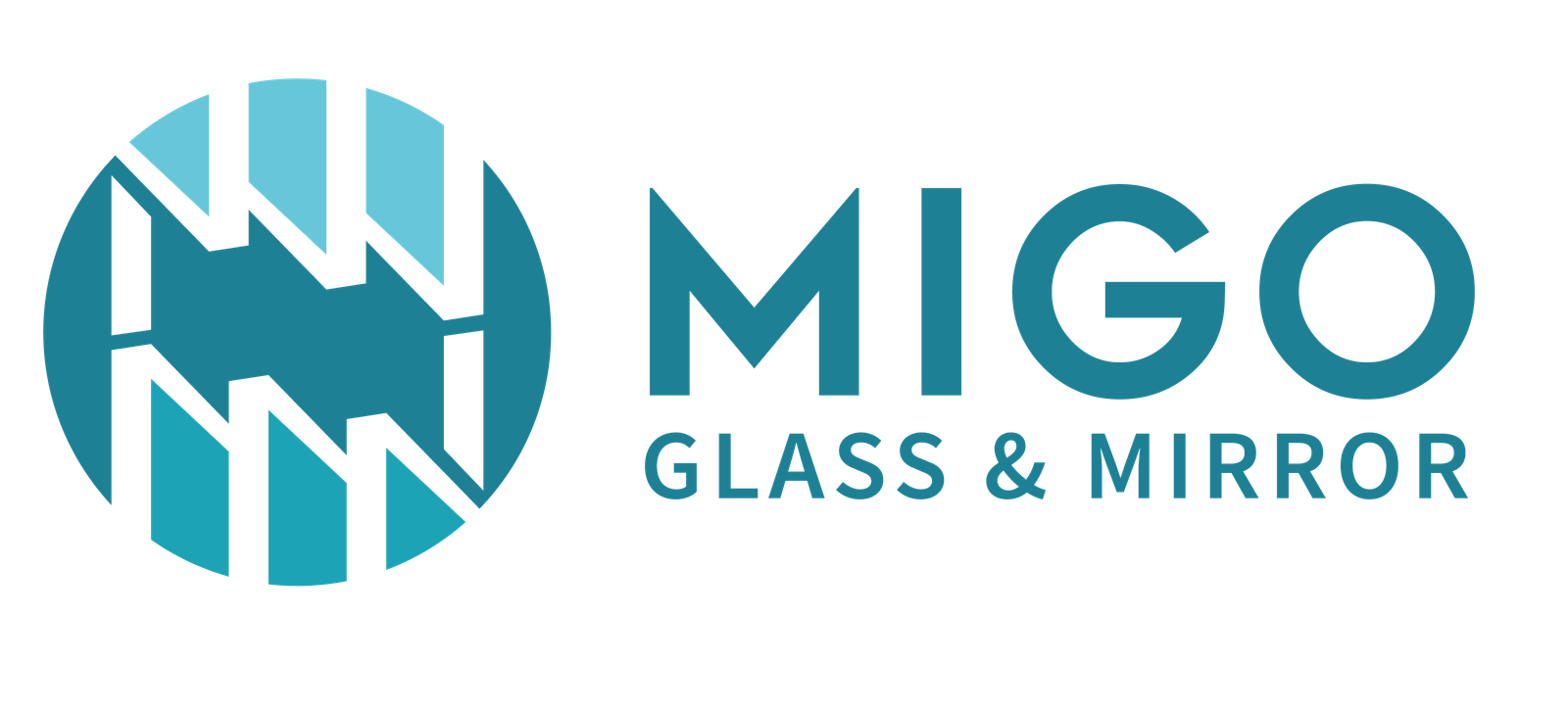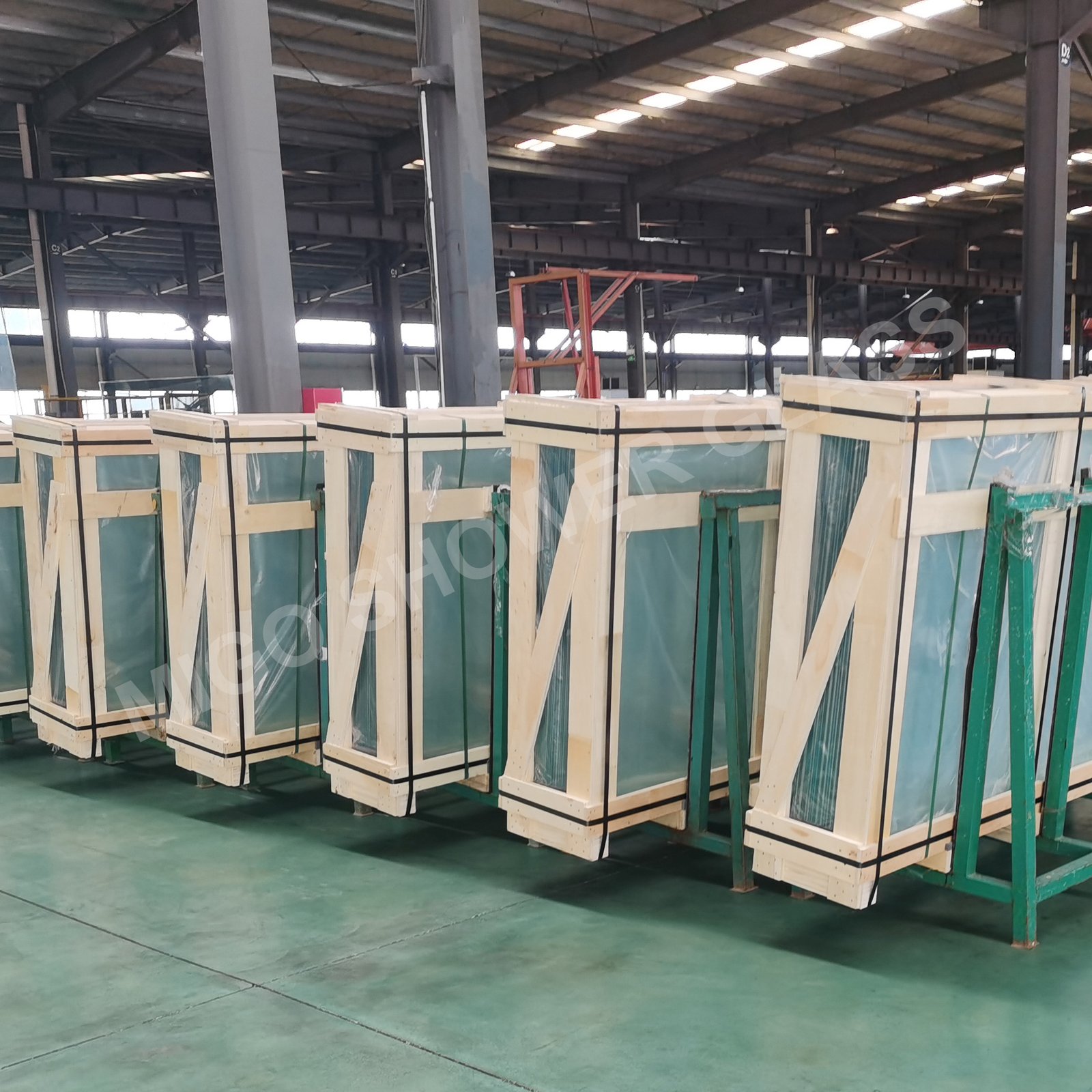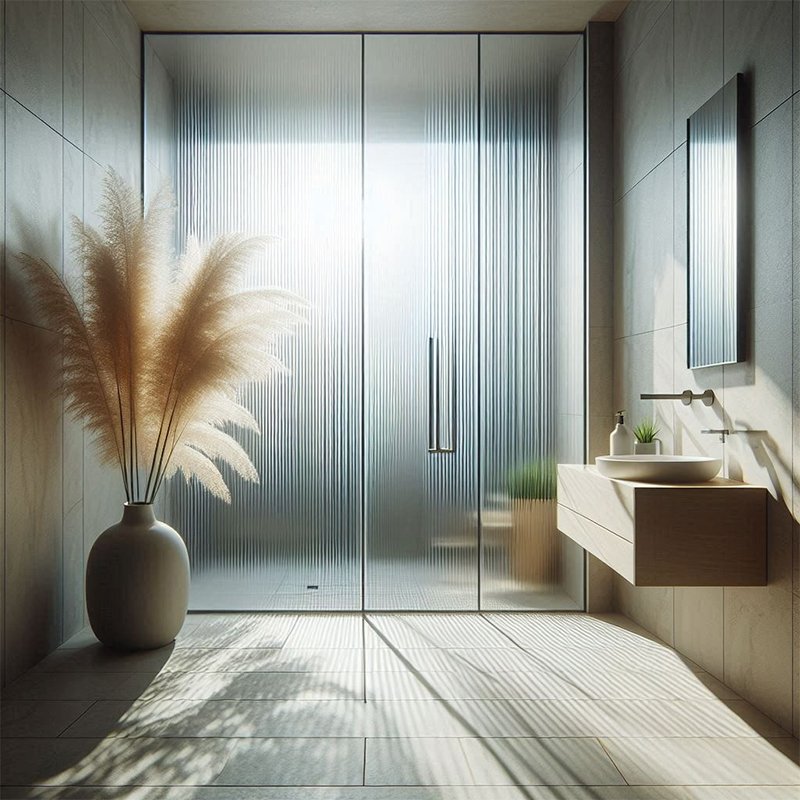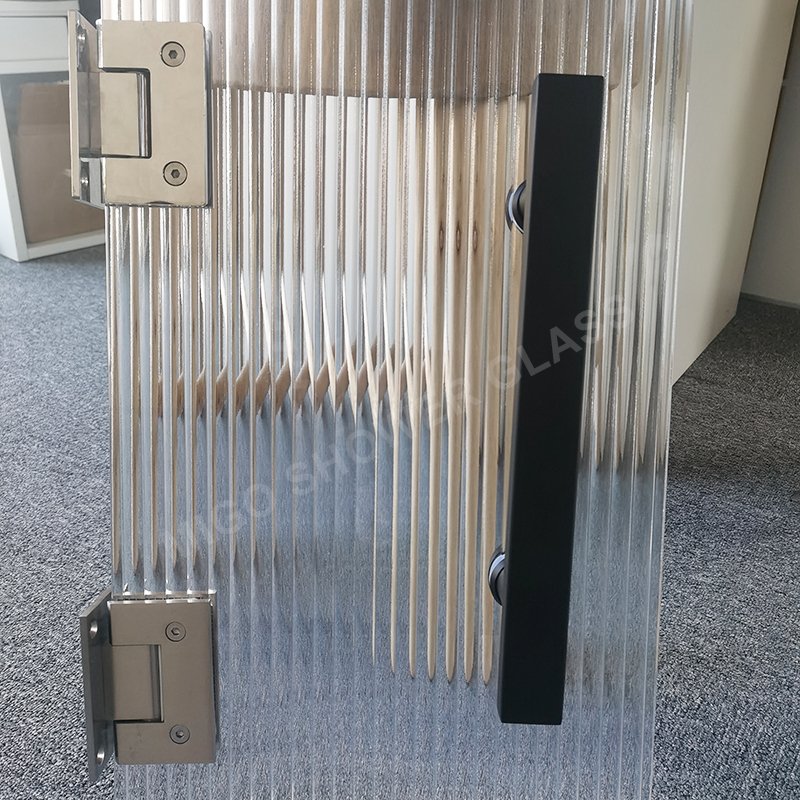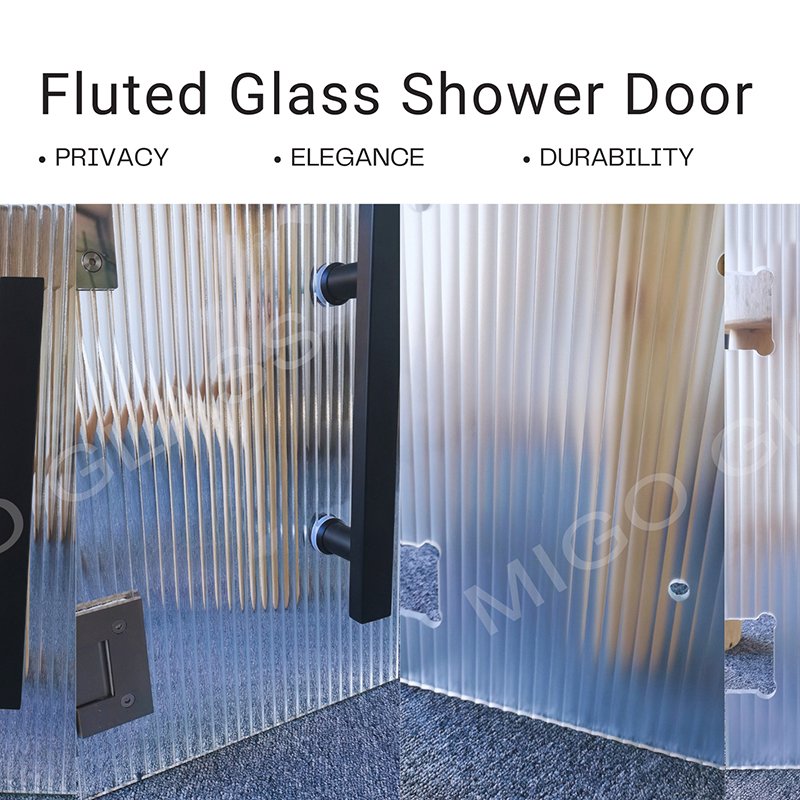When it comes to selecting glass for shower doors, enclosures, or other applications, you will often consider two main types: normal clear glass and ultra-clear glass. Making the right choice between them requires understanding the differences. Let’s explore the distinctions between clear glass and ultra-clear glass to help you make an informed decision.
1. What is Clear or Ultra Clear Glass?
1.1 Clear Glass
Clear glass is the standard type of glass commonly used in various applications. It offers transparency and clarity, allowing light to pass through without significant distortion or color alteration. Clear glass provides a clean and classic look, making it a popular choice for many projects. It is suitable for applications where transparency is the primary requirement, and there is no need for enhanced visual clarity or minimal color distortion. Clear shower glass is the most common decorative glass .
Due to the iron content in glass, clear glass will appear to have a greenish tint. For a bit of background, glass is made by heating sand, soda ash and limestone; the naturally occurring iron oxide in the sand creates the greenish tint that we perceive in clear glass. A determining factor in the amount of green ultimately present in a space is how the glass will be installed. For example, a framed glass shower door would only require 3/16” or 1/4” thick glass as the metal frame will provide the structural support. Frameless shower glass typically requires a thickness of 3/8” or 1/2” because the glass is acting structurally. As the thickness of the glass increases the greenish hue will become more pronounced.
Clear glass can help to create a visual hierarchy in a space while highlighting a functional element in the room. The slight hint of green in the glass helps to balance the weight of the vanity and height of the mirror on the opposite wall. If the glass were entirely transparent, the far right corner would lose it’s visual weight in the room and lead your eye to focus on the window and ultimately the toilet below.
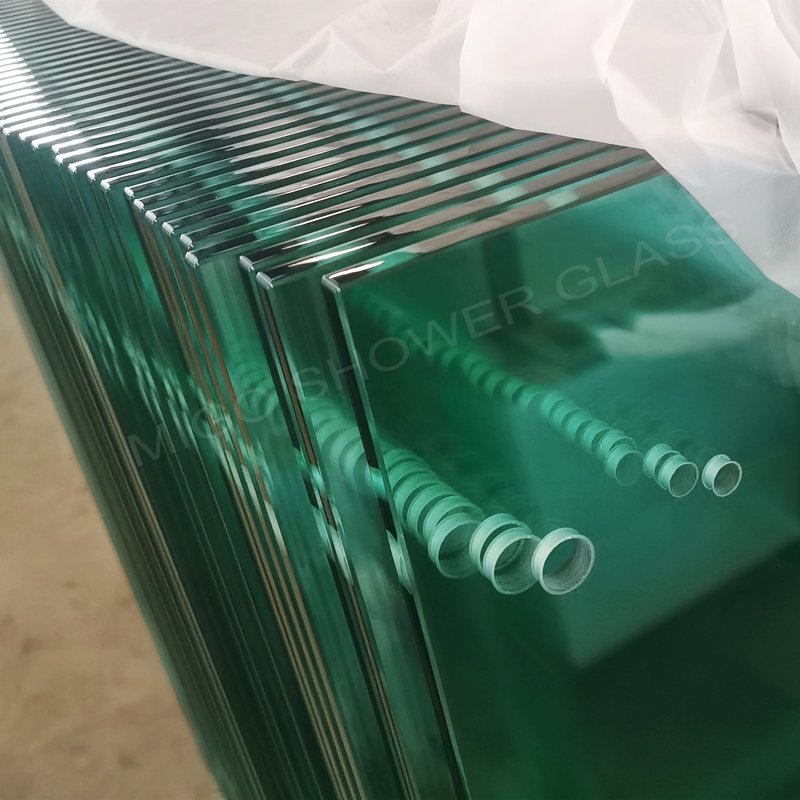
1.2 Ultra Clear Glass
On the other hand, ultra-clear glass, also known as low-iron glass, is a premium option that offers exceptional clarity and minimal color distortion. It is created from sand with a very low iron content. This minimal amount of iron will result in a glass with higher light transmission and improved transparency. Ultra-clear glass provides a nearly colorless appearance, allowing true colors and textures to shine through. Compared to clear glass, it offers a more brilliant and vibrant visual experience, making it particularly suitable for applications where visual aesthetics and true color representation are essential.
To maximize the length of a space, ultra-clear glass is a key feature in showcasing every inch of the area. The large and beautifully appointed shower above is the dominant feature in the room, if standard glass had been used, in this instance, the space would have been subtly divided into two separate zones. Instead, the transparency of the low-iron glass allows your eye to read the full extent of the room.
Ultra-clear/ low-iron glass can be used to show off all of the hard work and effort that goes into picking the perfect marble or porcelain slab, adjusting the wall structure to create an oversized niche and choosing the perfect bold, but minimal shower fixtures.
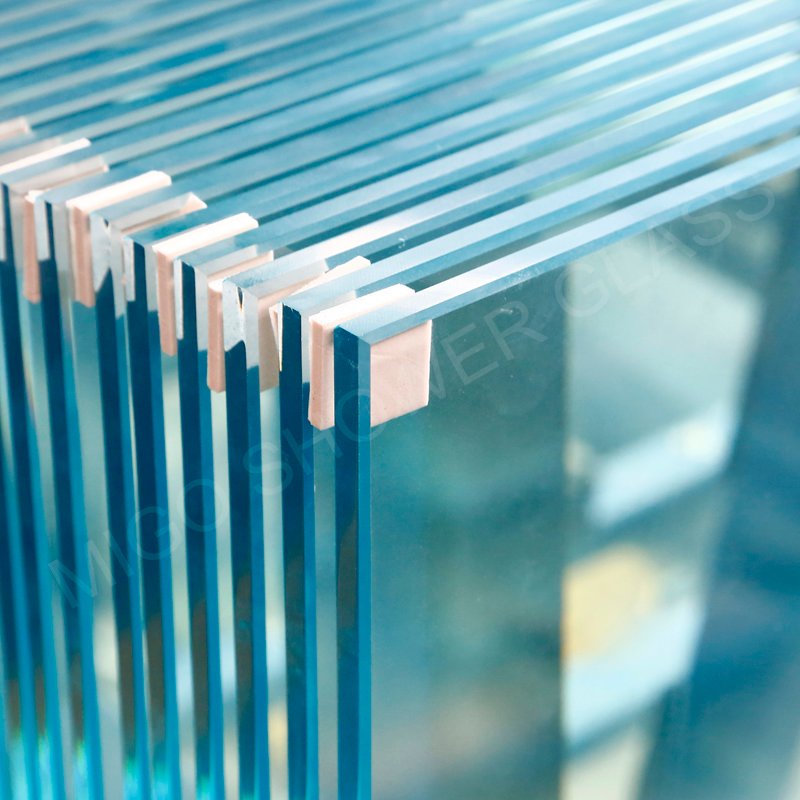
2. What Is The Difference Between Clear Glass And Ultra Clear Glass
2.1 Different Tint
The difference between clear glass and ultra-clear glass shows when you look at the edges of your piece. Clear glass has a bit of a green hue to its finish, whereas ultra-clear glass has a completely neutral finish. It contains approximately one quarter of the iron content of standard clear float glass, providing an ultra clear glass that is crystal clear in appearance.
The explanation for this tint difference is the following: Ultra-clear glass is made of low amounts of iron, compared to standard clear glass. For this reason, ultra-clear glass is also called low-iron glass. It is made of 0.01 % ferric oxide – in other words, it not composed of much iron at all. In comparison, clear glass can contain up to 4 or 5 times that material quantity due to the natural levels of iron present in sand, one of the main glass “ingredients”.
The greater light transmission capacity of high-clarity glass will show indoors – on a shower glass door, a glass shelf or a glass railing installed on your living room retainer wall, for example.
Thus, ultra-clear glass is ideal in decorative and furniture applications, aquariums, showcases, showers or shop fronts – any situation where featured colours or displays at close range need to be enhanced.
2.2 Different Clarity
Clarity is a fundamental characteristic of glass that significantly impacts its visual quality, aesthetics, and performance. When comparing clear glass to ultra-clear glass, clarity emerges as a defining feature that distinguishes the two types based on their optical properties, transparency, and color rendition.
2.2.1 Clear Glass
Clear glass, also known as standard or conventional glass, is the most common type of glass used in various architectural, residential, and commercial applications. It is typically made from a mixture of silica sand, soda ash, limestone, and other raw materials. While clear glass is transparent and allows light to pass through, it may exhibit slight imperfections and coloration due to inherent impurities in its composition, particularly iron oxide.
The clarity of clear glass is influenced by the presence of these impurities, which can impart a subtle greenish tint to the glass. This tint becomes more noticeable in thicker panels or when viewed from certain angles. While clear glass provides adequate transparency for many applications, its slight coloration and lack of absolute clarity may affect the visual quality and overall aesthetics, especially in settings where pristine clarity is desired.
2.2.2 Ultra-Clear Glass (Low Iron Glass):
Ultra-clear glass, also known as low iron glass, is engineered to achieve exceptional clarity and transparency by reducing the iron content present in standard clear glass. This reduction in iron impurities results in a glass with significantly enhanced optical properties, including superior clarity, true color representation, and minimal distortion.
One of the most striking features of ultra-clear glass is its near-colorless appearance. Unlike clear glass, which may exhibit a greenish hue due to iron oxide impurities, ultra-clear glass appears truly transparent and devoid of any noticeable coloration. This remarkable clarity allows for unobstructed views and ensures that the glass does not alter or distort the colors of objects seen through it.
The absence of iron impurities in ultra-clear glass also contributes to its exceptional optical clarity. Without the greenish tint associated with clear glass, ultra-clear glass offers pristine transparency and sharpness, making it ideal for applications where visual quality is paramount. Whether used in architectural glazing, high-end residential projects, or specialty displays, ultra-clear glass provides a superior viewing experience by delivering crisp, clear images with minimal distortion or interference.
Moreover, the superior clarity of ultra-clear glass extends beyond its visual appearance to its performance in various lighting conditions. Ultra-clear glass maximizes light transmission, allowing more natural light to enter a space and creating bright, inviting interiors. This feature not only enhances the ambiance of a room but also promotes energy efficiency by reducing the reliance on artificial lighting sources.
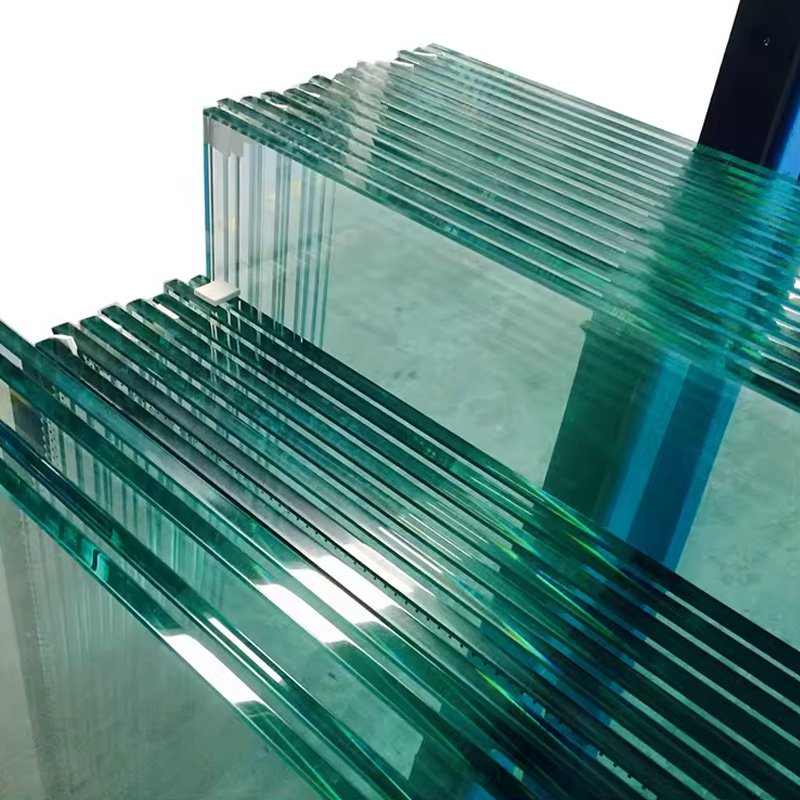
3. How To Choose Between Clear Glass vs Ultra Clear Glass
When choosing between clear glass and ultra-clear glass, it’s important to consider several factors to make an informed decision:
3.1 Visual Aesthetics
If achieving maximum clarity, true color representation, and a visually stunning result is your priority, ultra-clear glass is the ideal choice. It offers exceptional transparency and minimal color distortion, making it perfect for applications where the glass is a prominent feature, such as frameless shower enclosures or glass partitions. The superior visual quality of ultra-clear glass can elevate the overall aesthetic of your project.
3.2 Budget
It’s crucial to consider the cost implications. Ultra-clear glass is generally more expensive than clear glass due to its refined manufacturing process and superior clarity. The cost of low-iron glass can vary based on factors like brand name versus generic options and the fabricator. To avoid cost surprises, it’s advisable to determine the type of glass you require early in the project and factor the cost into your construction budget.
3.3 Application Requirements
Evaluate the specific requirements of your project. If your main concern is transparency without the need for enhanced clarity, clear glass may suffice. It provides good visibility and is suitable for applications where the absolute highest visual quality is not necessary. However, if you desire the utmost visual excellence with true color representation, ultra-clear glass is the superior option. It ensures minimal distortion and delivers a premium look and feel.
Consulting with glass suppliers or industry professionals is recommended to gain further insights and assistance in making the right choice. They can provide expert advice tailored to your specific needs and help you understand the advantages and trade-offs associated with each type of glass.
You can determine whether clear glass or ultra-clear glass is the most suitable option for your project by considering factors such as visual aesthetics, budget, and application requirements. Taking these considerations into account will ensure that your chosen glass type aligns with your desired visual outcomes and project requirements.
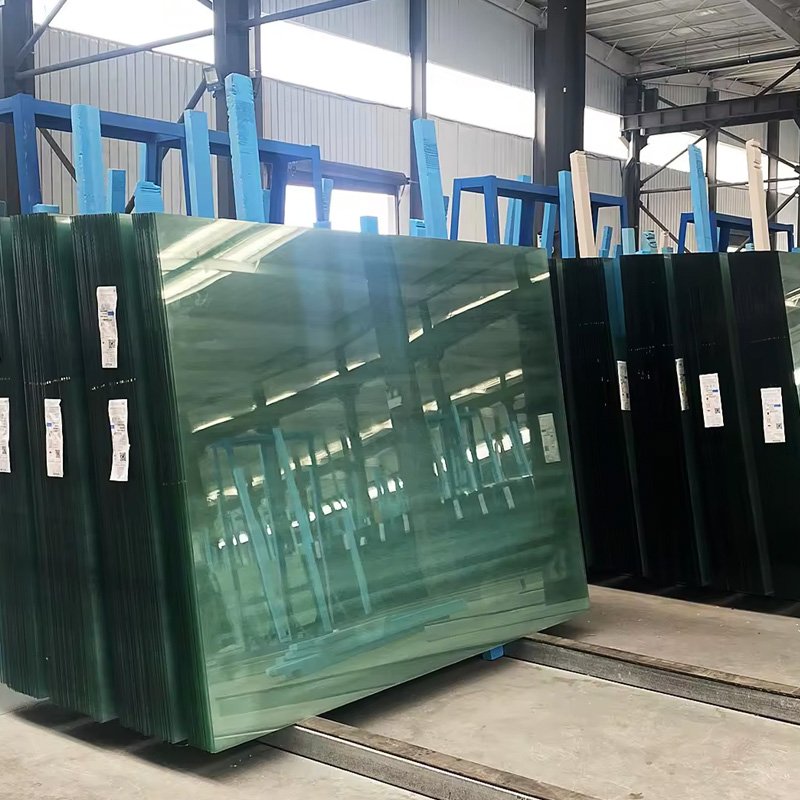
4. Summary
When choosing between clear glass or ultra-clear glass, you must consider the specific needs of your project and weigh the advantages of each option.
Clear glass is a versatile and cost-effective option for many applications, offering both transparency and functionality. It is suitable for daily use in shower rooms, glass doors and windows, and furniture. However, it may have a slight green tint and lower light transmittance due to impurities such as iron oxide.
Ultra-white glass, on the other hand, offers superior clarity, color neutrality, and higher light transmittance. Although more expensive than clear glass, the superior clarity and performance of ultra-clear glass make it worthy of use in projects where visual impact is critical.
Ultimately, the choice between clear glass and ultra-clear glass depends on factors such as budget, desired aesthetics, and the project’s specific requirements. MIGO Glass can supply clear and ultra-clear glass, whether you prioritize cost-efficiency or premium quality, we will meet all your requirements.
